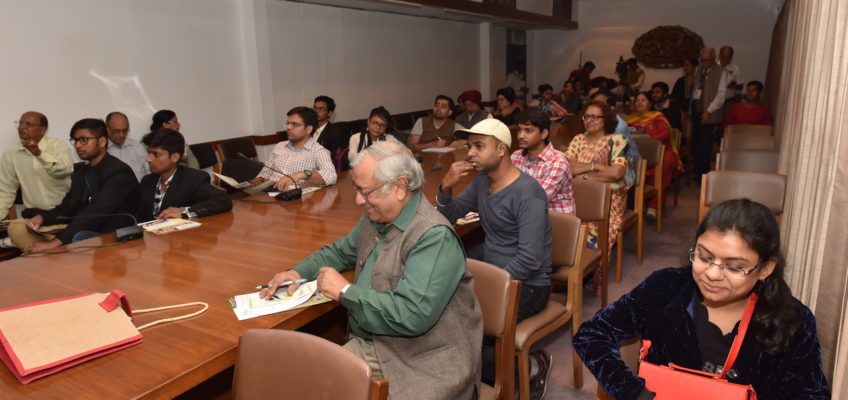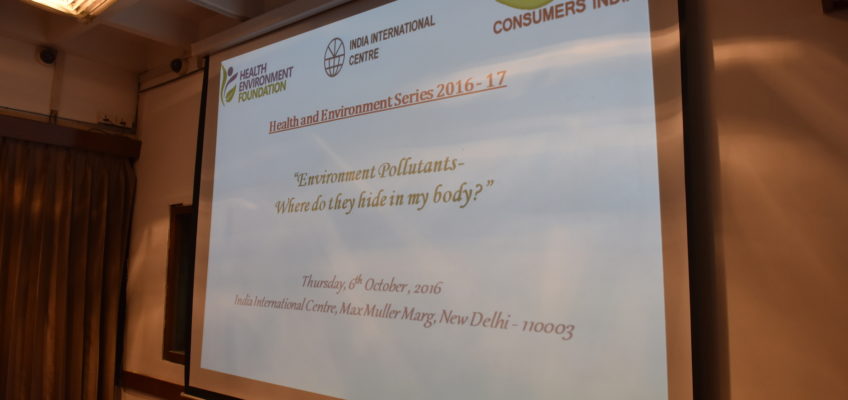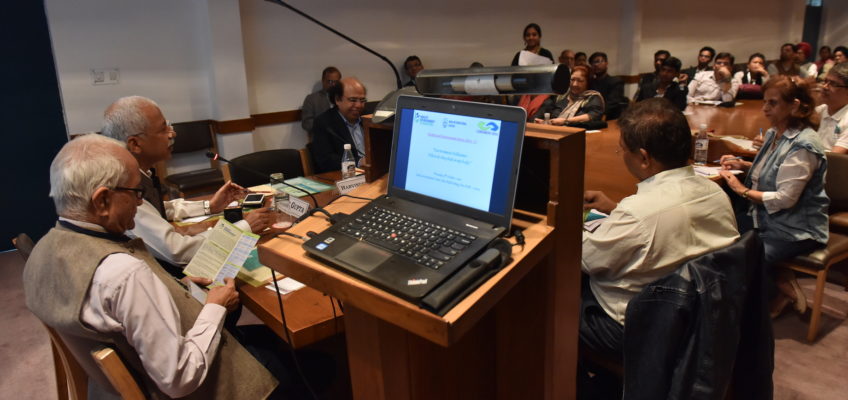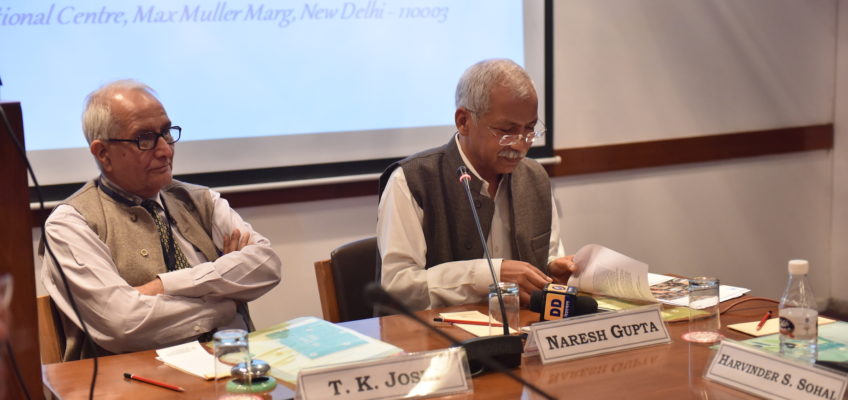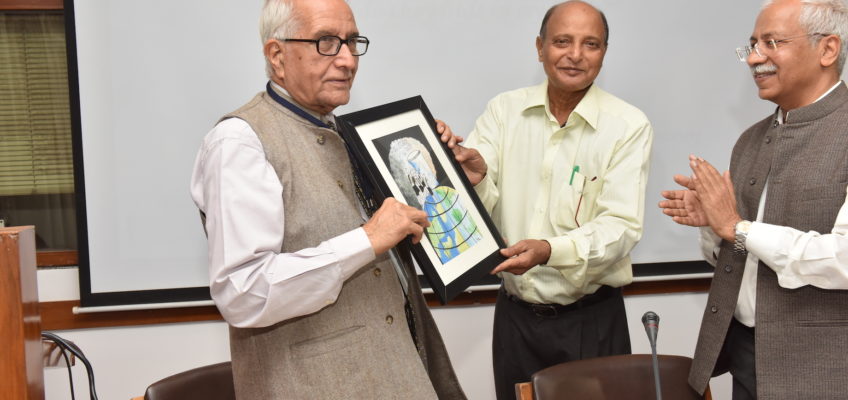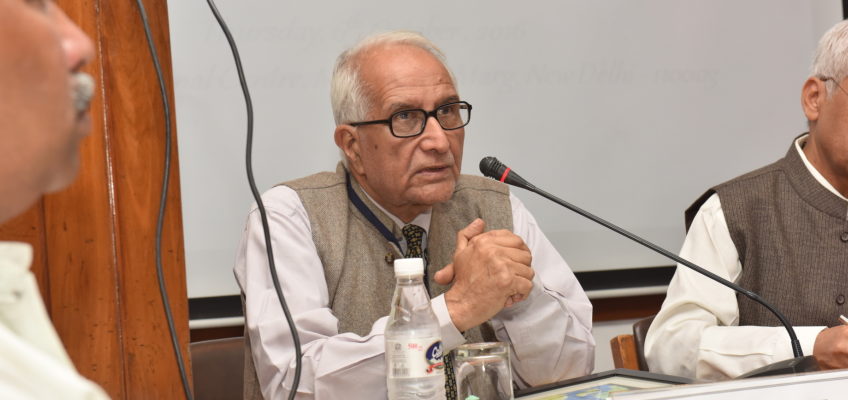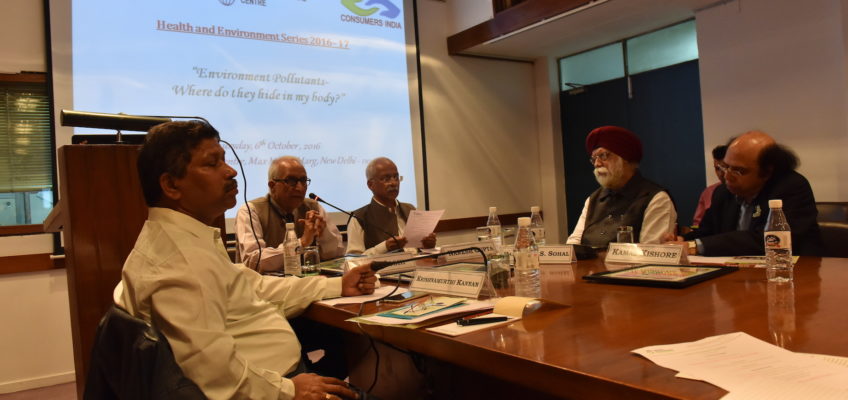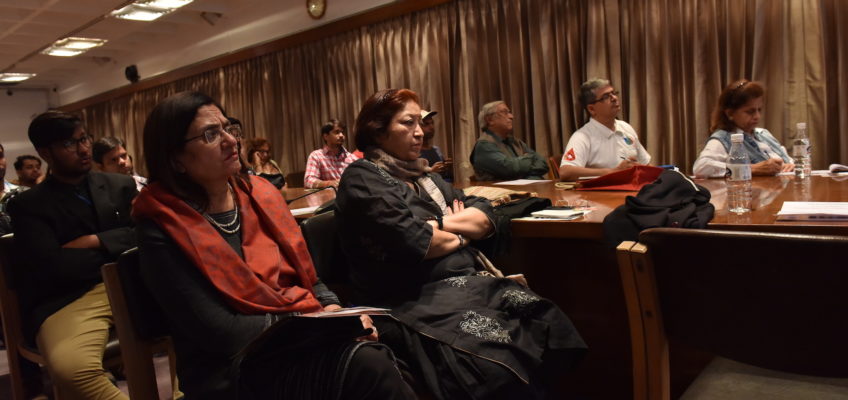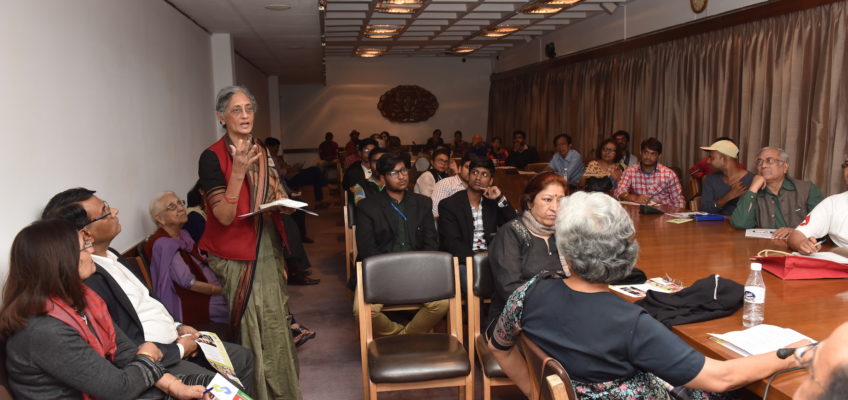Health Environment Foundation (HEF) and India International Centre (IIC) initiative on Environment and Health Series was focused on Environment Pollutants- where do they hide in my body? in its panel discussion on 09 November 2016, moderated by Dr. Naresh Gupta, Director-Professor, Maulana Azad Medical College, New Delhi and President, Health Environment Foundation.
It was heartening to see an increasing participation by the younger generation and was highly appreciated.
The Keynote Speaker Dr. Krishnamurthi Kannan from National Environmental Engineering Research Institute (NEERI)- a CSIR unit introduced the subject,dwelling on their work and experience in the field of environment pollution in India especially from manganese. This was followed by a crisp statement by Dr. TK Joshi, and Dr. Havinder Sohal, IFS. Professor Kamal Kishore from AIIMS made a detailed presentation and ended with Professor Naresh Gupta’s presentation.
It emerged that:
A pollutant is some waste material that has no physiological value in our body and produces ill-effects. Common ones emanate into our environment as:
- Air pollution
- Land, Soil and Water pollution
- Food and Plastics, Pesticides
- Cosmetics and Drugs
- Biomedical Waste
- Noise pollution
- Light pollution
- Biological Rhythm disturbance
The particulate matters, PM 10 and PM 2.5- some of which are freely permeable and can travel around distances freely so much unlike the pollutants in land, soil and water. The problems from environment pollution are on the rise, esp. the air pollution that goes and sits into the lungs besides other parts of respiratory system, eyes, skin and inside the body into many other organs. This pollution is now disrupting everyday life in as much as no one- be it young or old- can even go out for their morning walks or runs. This could make it worse. There is a dire need to control it as also other not-so-visible pollutants.
The organic pollutants are many, and risk from Persistent Organic Pollutants (POP) are higher from their resistance to degradation in environment, bioaccumulation in body, hormone disruptive properties, effects on reproductive and other body systems. These also suffer from infirmity of long-range transport. There are ill-effects in everyday life from Polycyclic Aromatic Hydrocarbons (PAH), Polychlorinated Biphenyls (PCB) in environment, and the fact that methyl paraben- found in some lipsticks- can cause disruption by binding to oestrogen hormones. This stays in the adipose tissues of the body.
In inorganics, heavy metals like Lead and Fluoride hide into the bones of the body and keep bio accumulating as and when there is repeat exposure. Some inorganic exposures may be carcinogenic, by disturbing the tumour-suppressor gene or the oncogenes. Chromium erodes the cells through reactive oxygen species. Dr. Krishnamurthy alluded to their work on Manganese in the families of mine workers and how identifying the resistant biomarkers could minimize the risks. Manganese crosses the blood-brain barrier, thus providing a direct access of this toxic metal to the human brain where it accumulates.
The risks from asbestos are a long-standing problem from its widespread use from shipbuilding to everyday home use. Asbestos is a generic name to these natural mineral fibres with widespread commercial application from their strength, flexibility, and resistance to heat, electricity and chemicals. Asbestos comprise of silicon, hydrogen, oxygen along with different metals.
Generally six types of asbestos are recognized:
- Chrysotile
- Amorite
- Crocidolite
- Tremolite
- Anthophyllite
- Actinolite
What is important is that all of them are injurious to human health and known to cause lung pleura cancer called Mesothelioma.
India still has asbestos in public environment, although India has banned asbestos mining. It is sourced from other countries and apparently still being used freely, from vehicle brakes to myriad other areas. Its consumption has gone up from 70,000 tones per year in late 1990s to current level of 400,000 tons per year. Asbestos belongs to Group I carcinogen as per WHO’s International Agency for Research in Cancer, meaning scientific evidence favours this conclusion .
There are techno-scientific difficulties in proving a causal relationship, esp. when the pollutant exposure is sub-lethal/ small, widespread and over a long period of time. These cannot be looked at from the legal language of ‘innocent until proven guilty’ but to be seen through the prism of precautionary principle ‘Assume harmful until shown to be harmless.’ This alone will bring in better safety in our environment and life
The various environment pollutants could gain entry into our body though:
- Breathing (Inhalation)
- Swallowing (Oral)
- Direct contact Skin (Percutaneous)
- Direct contact Eyes (Ocular)
Thus the initial brunt is borne by the eyes/ mouth/ throat/ breathing airways/ skin. However many of these pollutants get absorbed by the body sysytem and gain entry inside. Then they migrate to thoer preferred tissue/organ- like the boned for heavy metal Lead, the fat tissue for the parabens and phthalates, the lungs for smoke, the pleura for asbestos etc.
What is mor remarkable is the porpensity of these pollutants to cause damge to distant organs in the body. To wit, air pollution is linked to 6.5 million deaths! Less than 30% are from the lung disorders and including lung cancer. The other 70% coome from its harmfull effects in producing heart attacks and strokes!
The damage from enviornmental pollutants affects one or more of the following system in the body:
- Liver
- Gut and intestines
- Lungs, pleura and chest organs
- Heart and Blood vessels
- Brain and Nervous system
- Bones and Muscles
- Blood and Immune system
- Skin
- Eyes
- Kidneys and Urinary bladder
- Reproductive organs
- Hormones
- Cancer of different tissues and organs
The impacts are more on the younger children esp. the unborn ones, the pregnant ladies, the elderly or disabled, or with co-morbidity
The degree of damage from pollutants is also dependent on the route of exposure/ entry, the age of person, and any pre-existing co-mobidities including lifestyle risks.
Nature has provided all of us with a strong body defense mecahnism. This provides biotarnsformation of the toxic molecules gaining access into the body. The Liver transforms these toxins into soluble bye-products which may be extruded through the excretory system. In first phase, these may be oxidized/ reduced/ hydrolysed resulting in elimination of polar compounds, and congugated in others. In the process, there may be some reactive intermediates with cellular toxicity. But all in all, this mechanism clears off everyday risk from a ‘reasonable/good’ natural environment. The system may get overwhemed when the dose or duration of pollutants is large. A strong enzyme system Cytochrome P450 helps in this process of detoxification.
The corollary:
Keep your liver strong, avoid alcohol which damages liver, avoid other hepatotoxic exposures from drugs/ chemical/ indudtries/ environment. And keep the biotransformation and de-toxificatios system strong by having a healthy lifestyle, balanced diret, physical activities and excercises, and a clean emotional, social and spiritual practice.
Best Wishes!

President,
Health Environment Foundation
hefoundation1@gmail.com






